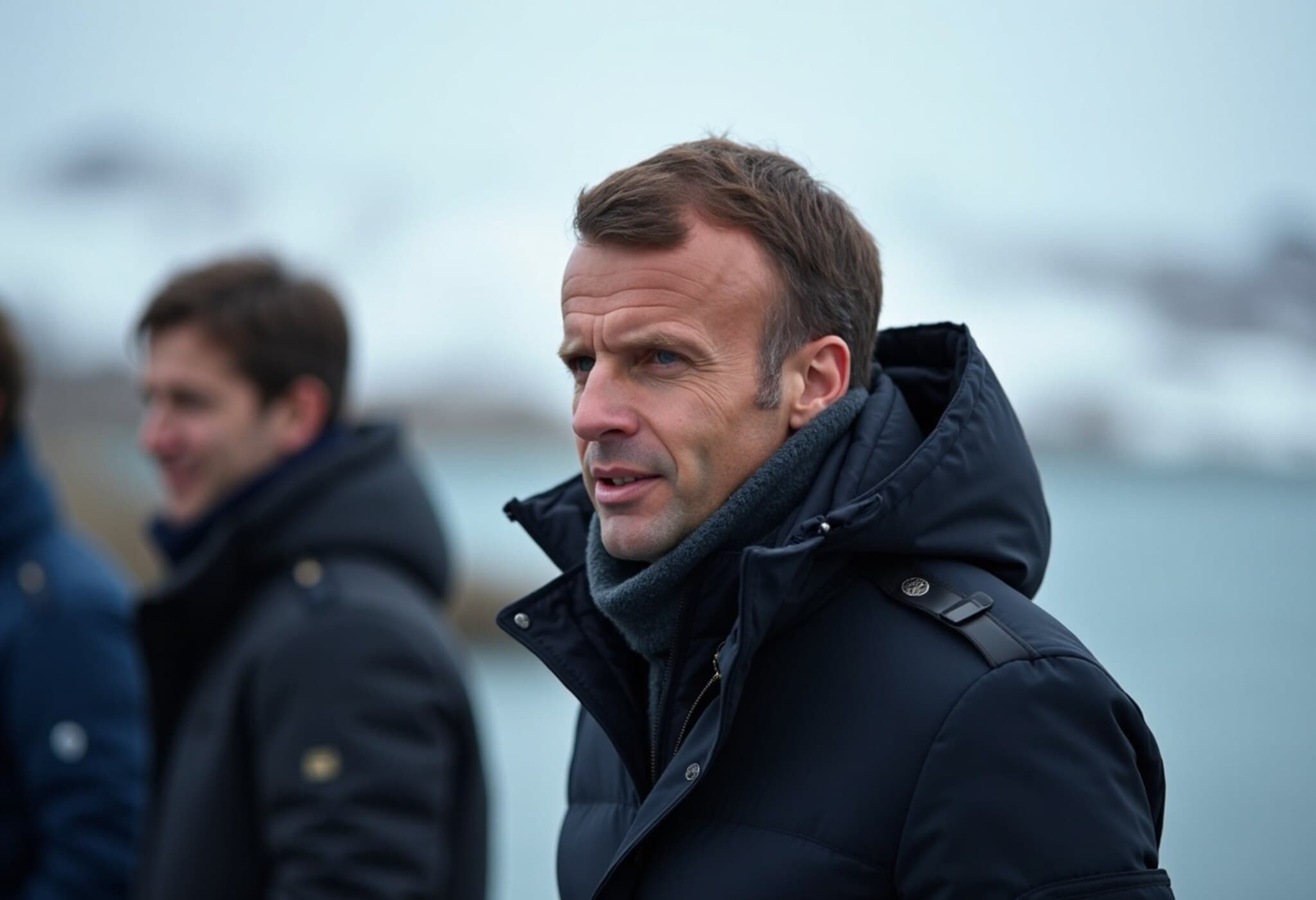Macron Embarks on Historic Visit to Greenland Amid Rising Tensions
French President Emmanuel Macron is set to arrive in Greenland this Sunday, marking the first visit by a foreign head of state to the vast Arctic territory since recent annexation threats were made by the United States. His trip carries a clear message of European solidarity and support for Greenland, an autonomous Danish territory strategically situated at the crossroads of the Atlantic and Arctic Oceans.
US Ambitions Stir Diplomatic Sensitivities
The backdrop to Macron’s visit involves escalating geopolitical friction. US President Donald Trump publicly declared his interest in acquiring Greenland, citing security needs and refusing to rule out the use of force to secure this resource-rich island. This announcement triggered significant unease in Greenland and Denmark, both of which have firmly rejected any notion of selling the territory.
In response, Macron openly stated at a United Nations oceans summit that "The deep sea, Greenland, and Antarctica are not for sale." He emphasized continuing European engagement to prevent any form of predatory behavior toward these sensitive regions.
A Collaborative Visit with Local Leaders
Upon arriving in Greenland’s capital, Nuuk, Macron is scheduled to tour key sites that highlight both the territory’s natural importance and its role in global security. His itinerary includes visits to a massive glacier, a hydroelectric power installation carved into a mountain, and a Danish naval frigate patrolling Arctic waters.
Accompanying Macron will be Danish Prime Minister Mette Frederiksen and Greenlandic Prime Minister Jens-Frederik Nielsen. According to Macron’s office, the trip was arranged at the request of Danish and Greenlandic authorities and is intended as a strong diplomatic signal amid heightened tensions.
Contrasting Diplomatic Approaches
This warm reception contrasts starkly with the chilly response to US Vice President JD Vance’s brief visit in March. Vance’s trip, which included a stop at the critical US military base in Pituffik, was perceived by Nuuk and Copenhagen as provocative, especially given his criticism of Denmark’s stewardship of Greenland’s security.
The Pituffik base is a pivotal part of America’s missile defense system, sitting directly on the shortest ballistic route from Russia to the US. Nonetheless, local sentiment remains firmly opposed to US annexation, with polls indicating that most of Greenland’s approximately 57,000 residents favor independence from Denmark but do not want to join the United States.
Denmark has unequivocally maintained that Greenland is "not for sale."
The Arctic’s Growing Strategic Importance
Greenland’s geopolitical value has soared amid the Arctic’s transformation due to climate change and the growing race for rare earth minerals. Melting ice is unveiling new shipping routes and heightened military interests.
In response, Copenhagen announced a comprehensive $2 billion plan earlier this year to bolster its military presence throughout the Arctic. NATO is also moving to establish a Combined Air Operations Centre near the Arctic Circle in Norway, as Russia simultaneously expands its own military footprint.
Macron aims to use his visit to explore how Greenland can be integrated into wider European initiatives that respect the territory’s sovereignty and foster its sustainable development.
Witnessing Climate Change Firsthand
Macron will also personally observe the stark impacts of climate change during his visit. One highlight is a stop at the glacier located on Mount Nunatarsuaq, roughly 30 kilometers from Nuuk. Recent reports indicate that Greenland’s ice sheet melted at a rate 17 times faster than the historical average during a heatwave in mid-May, underscoring the urgent environmental challenges facing the region.
France plans to significantly increase scientific research focused on Arctic ecosystems, inspired by French explorer Paul-Emile Victor, who led several Greenland expeditions in the 20th century. Notably, Greenlandic authorities have recently designated Victor’s historic hut in the north as a protected site.
Energy and Decarbonization Efforts
Another stop will be the hydroelectric power station at Buksefjorden, an installation located 600 meters inside a mountain and financed by the European Union. Discussions with Greenland’s leaders will focus on how to advance decarbonization and energy security.
Though Greenland is not a member of the European Union, it remains classified as one of the EU’s Overseas Territories.

